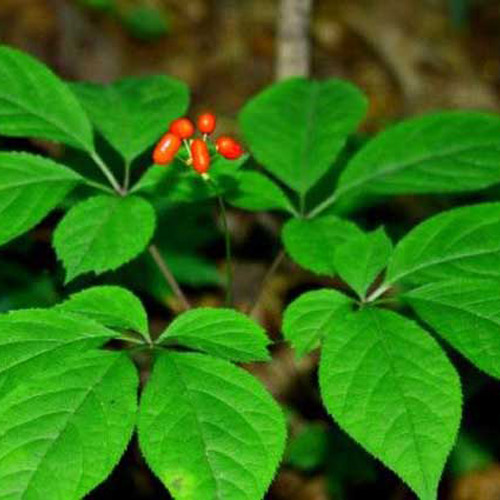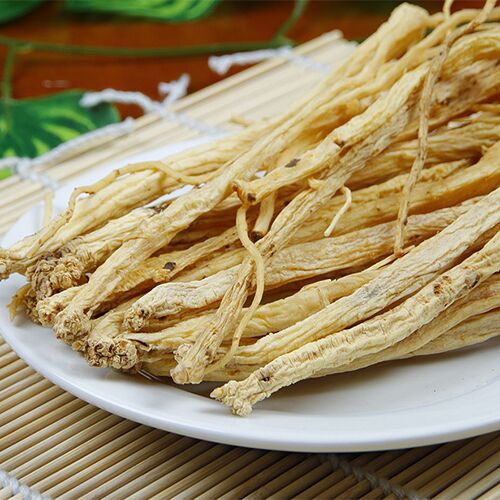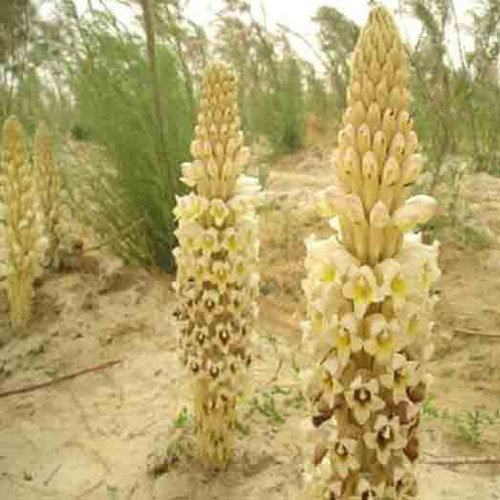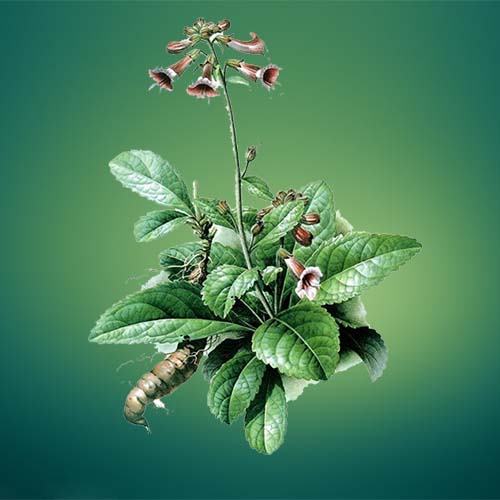- Chinese Name Bai Ji Tian 巴戟天
- Latin Name Morinda officinalis
- Other Names Radix Morindae Officinalis Root, Medicinal Indian mulberry Root
- Used Part Root
- Specification Powdered Extract
Morinda Root Extract Powder
Description
What is Ba Ji Tian?
In the West it refers to the root of Morinda Officinalis, which grows in Fujian, Sicuan, Guangdong, Hainan and Guangxi provinces in south China. It belongs to the family of Rubiaceae and the plant can be spotted mostly in river sides, mountains, and forests etc. And now most of them are grown for medicinal purpose in China.
Health Benefits
Morinda Root (Ba Ji Tian) enters the blood aspect of the kidney meridian, strengthens reproductive functions (which is termed as “strengthening yin” in the text) and benefits essence (jing). It can treat various kinds of impairments caused by overstrain and “disperse” wind and dampness evils attacking the body; because, pungent tastes are good for dispersing functions. It can also treat edema (swelling) in the feet caused by an attack of wind evils and/or dampness evils.
Morinda Root (Ba Ji Tian) is so popular probably because of its special relationship with kidney, an organ linking so closely to libido in Traditional Chinese medicine (TCM) theory. Kidney is more than just a common organ in this level and herbalists tend to believe that this important organ (named as Zu-Fu in TCM) is intimately related to impotence, infertility and other reproductive health matters.
Chemical Constituents
Identified active ingredients include: Rubiadin, rubiadin-1-methyl-ether, methyl-ether from Radix et Rhizoma Rhei, monotropein, tetraacetylasperuloside, β-sitosterol, palmitic acid, nonadecalkane and dimethyl-alkane. Radix Morindae Officinalis also contains monosaccharides, polysaccharides, resin, vitamin C, 11 free amino acids and 17 amino acid hydrolysates.
The cortex of Radix Morindae Officinalis (pic.a) contains reducing sugars and glycosides, cardiac glycosides, flavones, triterpenoid steroids, amino acids, organic acids, micro-anthraquinone and metal elements. More abundant microelements include potassium (K), calcium (Ca) and magnesium (Mg). The lead content in the cortex is lower than in the root core (pic.b). Other elements like iron (Fe), manganese (Mn), zinc (Zn) and 16 others are higher in the cortex than in the root core.
More Information: Kidney in TCM theory
Before going further, it is a good idea to explore the notion of kidney at the Traditional Chinese Medicine level now.
Kidney, in the shape of a bean, is one of internal organs of the urinary system in Western medicine, which flanks L1 to L3 lumbar vertebrae. It is in charge of secreting and excreting urine and regulate body fluid metabolism. If there is something wrong with kidney, normally organic lesions is involved, such as glomerulonephritis, pyelonephritis, kidney stone, and renal tuberculosis, etc.
Kidney in TCM, however, is quite different. The understanding of kidney pathophysiology is beyond itself from this angle. It is more and broader. For instance, the pyelonephritis may present different patterns in TCM’s eye, which could be kidney Yin or Yang, and kidney excess or deficiency. Based on the different presentations, different herbal remedies might be applied.
Given the above reason, practitioners believe that kidney functions on a few vital jobs like storing the essence, controlling bone, promoting urination and bowel movements, supervising the growth and development, and managing sexual reproduction besides of regulating body fluid metabolism.
TCM Tradition
Taste & Property Acrid, Sweet, Slightly Warm
Organ Meridians Kidney
TCM Functions
• Tonifies the Kidneys and strengthens Yang
– Kidney Yang Deficiency with impotence, male or female infertility, premature ejaculation, urinary frequency,
– Incontinence, irregular menstruation and a cold and painful back
• Disperses Wind-Cold-Damp and strengthens the sinews and bones
– Wind-Cold-Damp Bi with Kidney and Liver insufficiency with tight muscles of the lower back and legs, joint pain and difficulty moving
Science Research
Pharmacological Actions
1. Effects on Reproductive Organs
Animal studies
A 30g/kg/day dose of Radix Morindae Officinalis decoction was administered to castrated mice once a day for 15 days. Results showed that the weights of levator ani muscles, seminal vesicle and prostate were not significantly effected.
Female rats, administered with 20g/kg Radix Morindae Officinalis decoction twice a day by gavage for five days, showed increments in weights of the ovaries, uterus and pituitary glands. Blood luteinizing hormone (LH) levels were unchanged. However, the binding affinity of HCG/LH receptors and the number of HCG/LH receptors were both increased. Consequently, the value for dissociation constant (Kd) increased when compared to the control group. When rats were injected with LRH, LH secretion was enhanced. After 90 minutes, plasma LH level raised to 51.20ng/ml.
2. Effects on Stress Response
Animal studies
When 20g/kg Radix Morindae Officinalis decoction was given once per day to mice by gavage, for 11 consecutive days, it was shown that the body weights of the mice were increased, and that they could swim for a longer duration of time.
When 5, 10 and 50g/kg/day of Radix Morindae Officinalis infusion was given for eight consecutive days, it did not have the ability to prolong the lifespan of rats whose adrenal glands had been previously removed.
3. Effects on Thymus Glands
Animal studies
When immature mice were orally administered with 64 and 80g/kg of Radix Morindae Officinalis warm water extracts, or 60g/kg of an ethanol extract, or injected i.p. with 10g/kg of a warm water extract once a day for four consecutive days, it was noticed that their mammary glands became atrophic. However, when mature mice were administered 20g/kg Radix Morindae Officinalis decoction by gavage once a day for 11 days, the thymus gland weight and white blood cell count increased. Radix Morindae Officinalis was also able to restore depressed white cell counts in gamma-radiated mice.
4. Toxicity
Acute toxicity: Mice were fed with 50g/kg Radix Morindae Officinalis decoction four times a day. The accumulated dose was 250g/kg. Mice were then observed for three days. No animal death was observed.
Genotoxicity: Using the SOS chromotest, it was shown that Radix Morindae Officinalis decoction had no mutagenic or genotoxic effects on Escherichia Coli PQ37 DNA.

.jpg)



